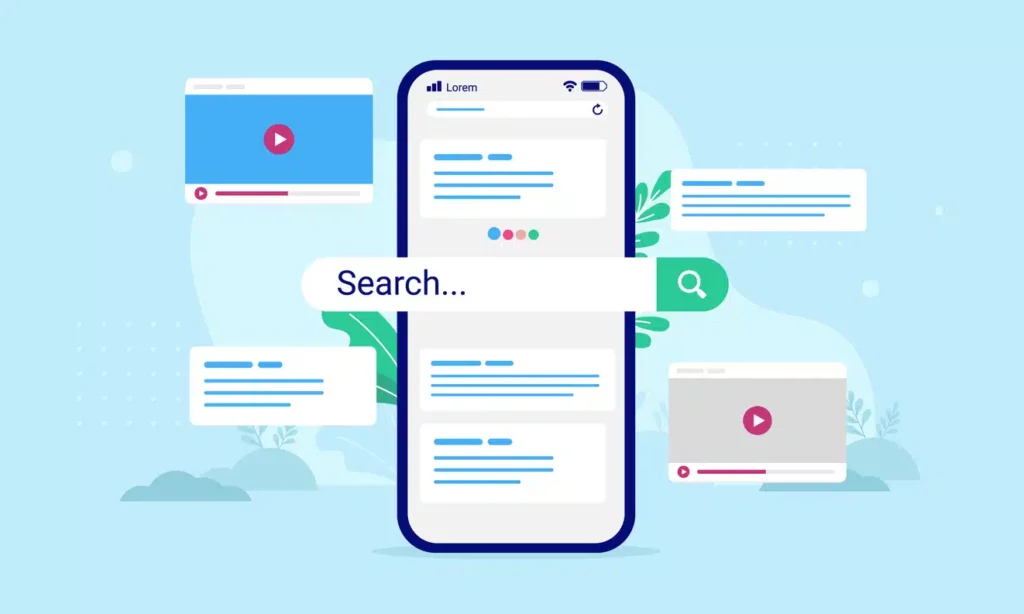The ever-changing landscape of SEO can feel overwhelming. The March 2024 Google update ushered in a new era, emphasizing user experience, high-quality content, and ethical backlink building. This comprehensive guide empowers you to navigate these changes. We’ll delve into the specifics of the update, explore actionable strategies for crafting user-centric content, and outline techniques for building a trustworthy backlink profile.
Table of Contents
The March 2024 Core Google Update
Expertise, Authoritativeness, and Trustworthiness (E-A-T) have long been established as crucial factors in Google’s ranking algorithm. The March 2024 Google update further emphasized this concept, placing a premium on websites and content created by demonstrably experienced sources. This means that websites with established reputations in their respective fields, with creators who possess relevant expertise and a proven track record, will be more likely to rank higher.
For instance, imagine a search query for ‘complex financial planning strategies.’ Google will prioritize websites from reputable financial institutions or those authored by certified financial planners with demonstrably successful careers.
The March 2024 Google update also saw Google take a more aggressive stance against manipulative SEO practices. Here are some key areas targeted:
Scaled Content Creation for Keyword Manipulation
Previously, many websites relied on mass-producing content primarily to target specific keywords, often disregarding quality or user needs. The March update cracked down on this tactic. Google’s algorithms are now better equipped to identify content created solely for search engine ranking purposes, and such content is less likely to perform well.
Abusing Expired Domains for Backlinks
Backlinks, or links from other websites pointing to yours, are a significant ranking factor. In the past, some SEOs exploited expired domains with established backlink profiles to artificially inflate their own website’s authority. The March update addressed this by devaluing backlinks from irrelevant or low-quality expired domains.
Unnatural Backlink Profiles
Unethical backlink building practices, such as purchasing links from unrelated websites or participating in link exchanges, were also targeted. With the Google update, it now focuses on the quality and relevance of backlinks, favoring websites with natural backlink profiles earned through genuine connections and high-quality content.
Parasite SEO Tactics
This refers to manipulating content on other websites to gain backlinks, such as by injecting keywords into blog comments or forum posts. The March Google update made it harder for such tactics to succeed, as Google can now better identify and discount these manipulative attempts.
Impact on SEO Strategies
The March 2024 Google update necessitates a shift in SEO strategies. Here’s how:
- Focus on Expertise and Experience: Building a strong reputation within your niche is paramount. Showcase your expertise through credentials, case studies, and content that demonstrates in-depth knowledge.
- Prioritize Quality Content: Create valuable, informative content that genuinely addresses user needs. Invest in well-researched articles, insightful guides, and multimedia content that establishes you as a thought leader.
- Earn Backlinks Naturally: Focus on creating content so compelling that other websites want to link to it organically. Build relationships with influencers and collaborate on guest blogging opportunities within your niche.
- Technical SEO Remains Crucial: Ensure your website is mobile-friendly, loads quickly, and has a clean and user-friendly structure. Optimize for relevant keywords while prioritizing a positive user experience.
By adapting to these changes, websites can navigate the new SEO landscape and maintain strong rankings in search results. The March 2024 Google update serves as a reminder that Google prioritizes user experience and rewards websites that offer genuine value and expertise.

Forgetting User Needs
The March 2024 Google update cemented a fundamental truth in SEO: content reigns supreme. However, the emphasis has shifted from keyword-stuffed articles to user-centric content that genuinely informs, engages, and fulfills user needs.
User Intent Through Keyword Research
Keyword research remains a cornerstone of SEO, but the focus has evolved. Previously, the emphasis might have been on identifying high-volume keywords and stuffing them into content. Now, the goal is to understand the why behind user searches, their intent. Effective keyword research tools can help uncover the underlying questions and problems users are trying to solve when they enter specific keywords.
For example, researching the keyword best running shoes for beginners might reveal that users are looking for reviews, comparisons, or buying guides. By understanding this intent, you can create content that directly addresses their needs; a comprehensive guide to choosing the right running shoe for beginners, with in-depth reviews, comparisons, and buying tips tailored to their specific concerns.
Craft Informative, Well-Structured, and Engaging Content
Once you understand user intent, it’s time to create content that delivers. Here’s what matters with the Google update:
- Informative: Content should be accurate, well-researched, and provide genuine value to the reader. Back up your claims with data, statistics, and expert opinions when appropriate.
- Well-structured: Organize your content logically with clear headings, subheadings, and bullet points for easy navigation. This makes it easier for users to find the specific information they need and improves readability.
- Engaging: Go beyond simply providing information. Use a conversational tone, incorporate storytelling elements, and pose thought-provoking questions to keep readers engaged. Consider the target audience and tailor the writing style accordingly.
Solve User Problems and Fulfill Needs With the Google Update
The ultimate goal of user-centric content is to solve user problems or fulfill their needs. This can take many forms. Identify common pain points in your niche and offer solutions through detailed guides, tutorials, or troubleshooting steps. Help users make informed choices by providing insightful product reviews, comparisons, and buying guides. Craft informative articles, explainers, and glossaries to educate your audience on complex topics.
Prioritize Content Freshness and Updates
Search engines favor fresh and up-to-date content, especially with the new Google update. This doesn’t necessarily mean constantly churning out new content. Instead, it’s about revising existing content to reflect new information, trends, or industry updates. You can also revisit evergreen topics and offer fresh perspectives or deeper dives.
Readability and Mobile Responsiveness
Never underestimate the power of clear and concise writing. Aim for a writing style that is easy to understand for your target audience. Utilize short sentences, active voice, and avoid overly technical jargon.
Ensure your content is optimized for mobile devices. With the majority of web searches now conducted on smartphones, a mobile-friendly website and responsive content are crucial for a positive user experience.
Leverage Multimedia Elements
High-quality images, videos, and infographics can significantly enhance user engagement and understanding. Break up text with visuals, incorporate relevant videos or interactive elements, and ensure images are optimized for loading speed.
User-Centric Content in Action
Imagine a website specializing in home gardening. Instead of generic articles on growing tomatoes, they could create a series of user-centric guides:
- Beginner’s Guide to Growing Tomatoes in Containers: addresses space limitations and offers step-by-step instructions.
- Troubleshooting Common Tomato Plant Problems: helps users identify and solve issues like pests or diseases.
- Harvesting and Preserving Your Tomato Bounty: provides tips for picking and storing tomatoes for long-term enjoyment.
By prioritizing user needs and crafting informative, engaging content that caters to their specific questions and challenges, you can win the hearts (and clicks) of your audience and achieve long-term SEO success.
Building Backlinks the Wrong Way
Backlinks, or incoming links from other websites to yours, remain a significant ranking factor in Google’s algorithm. However, the March 2024 Google update underscores a crucial shift: quality now reigns supreme over quantity. Building a strong backlink profile is no longer about acquiring as many links as possible but rather about earning backlinks from trustworthy and relevant sources.
Backlinks act as a vote of confidence for your website. When high-authority websites link to yours, it signals to Google that your content is valuable and credible. This can significantly boost your website’s ranking potential.
The March 2024 Google update emphasizes the importance of backlinks from trustworthy and relevant websites. Low-quality backlinks from irrelevant or spammy websites can now even negatively impact your rankings. Google’s algorithms are now more sophisticated in identifying the quality and context of backlinks.
Here are some key strategies to build a strong backlink profile in the new SEO landscape:
Focus on Relevance
Prioritize earning backlinks from websites within your niche or industry. These links carry more weight with the Google update and demonstrate topical relevance. For instance, if you run a website on sustainable gardening practices, a backlink from a reputable environmental website would be more valuable than a link from a general news website.
Create Link-Worthy Content
The cornerstone of a strong backlink profile is high-quality content that other websites naturally want to reference. Invest in creating informative, insightful, and well-researched content that establishes you as a thought leader in your niche. This could include in-depth guides, original research, or data-driven analysis.
Guest Blogging
Guest blogging on reputable websites within your niche allows you to showcase your expertise and earn valuable backlinks. Conduct thorough research to identify relevant websites that accept guest posts and ensure your content aligns with their audience’s interests.
Build Relationships with Influencers
Industry influencers can significantly amplify your reach. By building relationships with bloggers, journalists, and other prominent figures in your niche, you can create opportunities for them to reference your content or website.
Encourage Brand Mentions and Social Shares
While not direct backlinks, brand mentions and social shares can still have a positive impact on SEO. Encourage audience engagement by promoting your content on social media and creating opportunities for them to share your work. Positive brand mentions online can also indirectly influence other websites to link to you as a credible source.
Building a Trustworthy Backlink Profile
Imagine a website specializing in financial planning for young professionals. Here’s how they could build a strong backlink profile:
- Develop a series of informative articles on topics like budgeting, student loan repayment, and investing basics.
- Identify relevant financial blogs and websites accepting guest posts. Pitch well-researched articles that address the specific needs of young professionals.
- Network with financial advisors and influencers on social media, providing valuable insights and engaging in industry discussions.
- Encourage social media shares by creating engaging infographics and visuals that simplify complex financial concepts for their target audience.
By focusing on these strategies and prioritizing quality over quantity, you can build a backlink profile that strengthens your website’s authority and improves your ranking potential in the age of Google’s quality-focused SEO.
Ignoring Technical SEO
While high-quality content and a strong backlink profile remain crucial, neglecting technical SEO can significantly hinder your website’s visibility in search results.
Technical SEO plays a critical role in how search engines perceive your website. A website with a clean and optimized technical structure allows search engine crawlers to efficiently navigate your content and gather the necessary information for indexing. This ultimately influences how your website ranks for relevant search queries.
Here are some key areas to focus on for a healthy technical SEO profile with the new Google update:
Website Speed and Mobile-Friendliness
Website speed is a significant ranking factor for Google. A slow-loading website not only frustrates users but also hinders search engine crawling. Ensure your website loads quickly on all devices, particularly mobile devices, as the majority of web searches now occur on smartphones.
Website Structure and Navigation
A well-structured website with clear navigation allows users and search engines to easily find the information they need. Organize your website logically, with a clear hierarchy of pages and internal linking that connects relevant content.
Schema Markup
Schema markup is a form of code that provides search engines with additional information about your website’s content. Implementing schema markup can enhance your search result snippets with rich details, attracting more clicks and improving the user experience. This will help you keep up with the new Google update.
Clean and Error-Free Code
Clean and well-written code ensures your website functions smoothly and avoids errors that might hinder search engine crawling. Regularly check for broken links, crawl errors, and other technical issues to maintain a healthy website.
Website Security and User Privacy
Website security is paramount, especially for websites handling sensitive user information. Ensure your website uses HTTPS encryption and implements strong security measures to protect user data. Prioritize user privacy by having a clear privacy policy and adhering to relevant data protection regulations.
Technical SEO in Action With the Google Update
Imagine an e-commerce website selling handmade jewelry. Here’s how they can leverage technical SEO:
- Implement a Content Delivery Network (CDN) to ensure fast loading speeds across different geographical locations.
- Optimize product images with proper compression and alt text descriptions for both users and search engine crawlers.
- Create a clean and user-friendly website structure with clear categories and subcategories for browsing jewelry types.
- Utilize schema markup to provide rich product details in search results, such as product descriptions, prices, and availability.
- Regularly conduct website audits to check for broken links, crawl errors, and maintain a secure website environment.
Remember, technical SEO is an ongoing process. By regularly monitoring your website’s health and implementing best practices, you can ensure your website remains search engine friendly and continues to attract users in the long run.
SEO in 2024 With the New Google Update
The journey to SEO success is an ongoing process. By prioritizing user needs, creating high-quality content, and adhering to ethical backlink practices, you can build a website that Google recognizes as trustworthy and valuable. Remember, a strong technical foundation is essential for optimal search engine crawling and indexing.
Regularly monitor your website’s health and implement the strategies outlined in this guide to stay ahead of the curve. Embrace the new SEO era following the Google update by focusing on quality, user experience, and building a website that truly serves your audience. The rewards will be a loyal following and a website that thrives in search results.
Need help implementing these strategies? Let Evolvedash propel your website to the top.



















